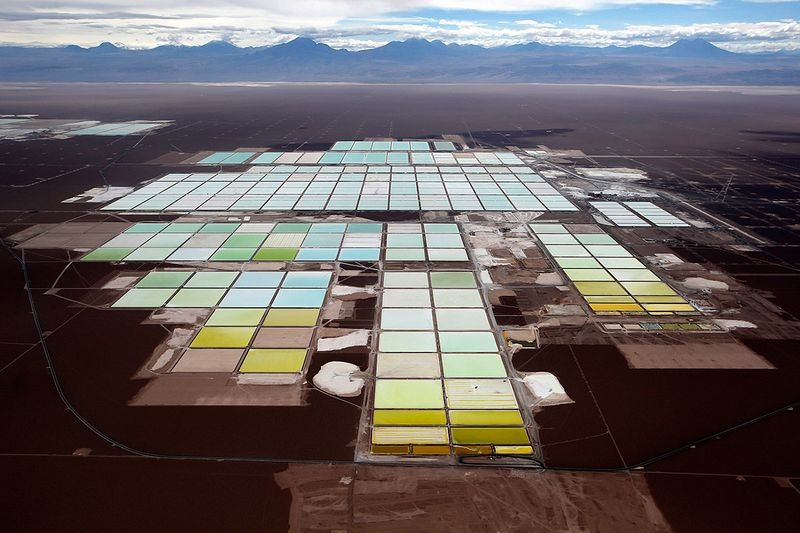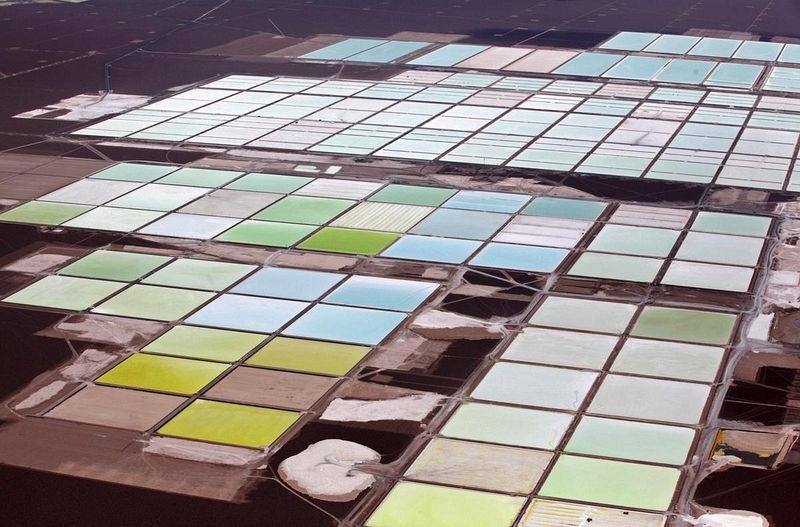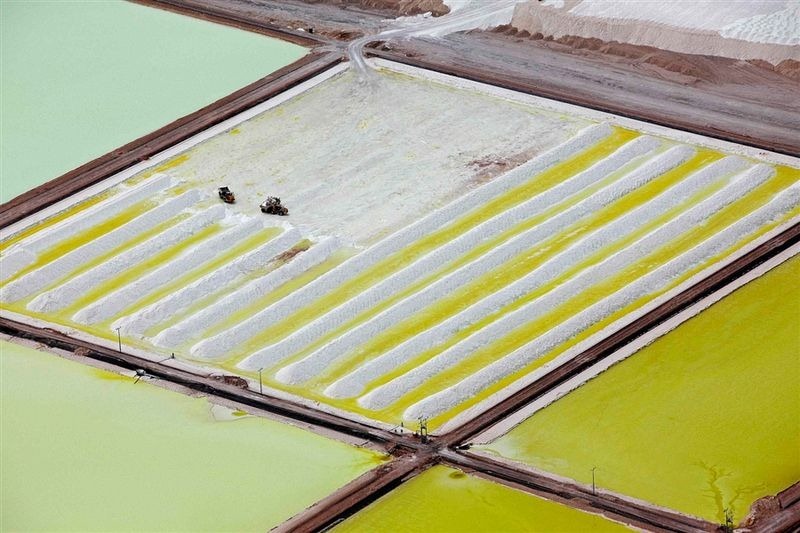In the wastelands of Salar de Atacama, about 700 miles north of Santiago, is a huge lithium mine field operated by Sociedad Química y Minera de Chile (SQM), a Chilean chemical company, and the world’s third largest produced of lithium. The silver-white metal is found dissolved in brine, a mere 130 feet below the surface of the desert. The thick slushy brine is pumped from the ground and poured into shallow evaporation pools to dry under the hot desert sun. As the water slowly evaporates, it leaves behind a greasy yellowy material that yields one of the most precious metal of the 21st century.

An aerial view of the brine pools and processing areas of the Soquimich lithium mine on the Atacama salt flat. Photo credit
Lithium, the lightest of all metals, is the key component in rechargeable batteries that keep our portable devices running and make modern life possible. It is the new wonder material — a metal that in future could become one of the most strategic commodities in our planet. Yet, until very recently, lithium was a minor commodity used in small quantities in the manufacture of glass, ceramics, and grease and one or two very specialized industries like pyrotechnics. But demand for lithium has skyrocketed in recent years as cellphones and iPads have became staple among all classes of people.
For almost half a century, starting in the early 1950s, the world’s primary source of lithium was the Kings Mountain mine in North Carolina, in the United States. The metal, vital to the production of nuclear fusion weapons, was extracted from a silicate mineral called spodumene, which was also occasionally used as a gemstone. Although spodumene can produce one of the purest lithium, the process was laborious and expensive. When lithium was discovered in the salt fields of South America, lithium production companies shifted their focus to the extraction of the metal from brine, which was less expensive. By the end of the 20th century, the North Carolina mine had shut down.
The majority of lithium is now supplied by Chile, Argentina and Bolivia, where the world’s largest reserves of lithium are located. Chile alone fulfills 43% of the world’s demand for lithium.







small correction to the end of the 2nd to last paragraph. should read "By the end of the 20th century, the North Carolina mine had shut down." afaik, the 21st is still in progress.
ReplyDelete